 |
 |
 |
| |
THERE IS A PERSISTENT GAP IN THE QUALITY OF TIMELY HEPATITIS C ERADICATION DESPITE EFFORTS TO STREAMLINE SPECIALIST REFERRALS FROM PRIMARY CARE
|
| |
| |
Download the PDF here
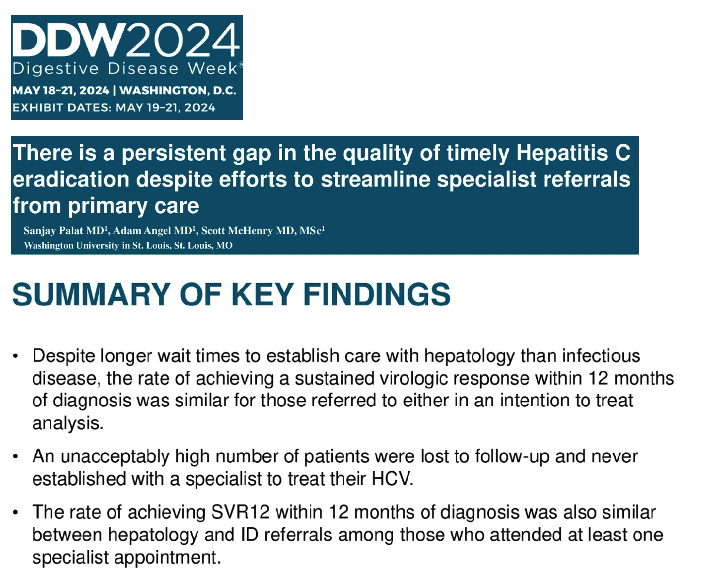
ABSTRACT
Background:
Hepatitis C virus (HCV) is usually diagnosed in primary care, an emergency department, or during an unrelated hospitalization. Due to logistical barriers, most HCV treatment is only offered through specialty clinics, but connecting patients to specialty care can be very difficult. There is also a growing emphasis among quality improvement societies to improve the 'timeliness' of HCV treatment to limit the risk of developing liver-related complications. Thus, we implemented a quality improvement (QI) project to evaluate the success rate of screening for and treating HCV in the primary care setting. Here we describe our baseline findings.
Methods:
Consecutive patients (9/30/2018 - 12/31/2022) at a single, urban, multi-ethnic, underserved, resident-run primary care clinic were studied. Patients with first detectable HCV RNA PCR viremia during that time were included. The primary outcome (quality metric) was the proportion that were in a sustained virologic response (SVR12) within 12 months of the first detectable viremia. We explored if this rate differed if the referral for treatment was made to hepatology or to infectious disease (ID).
Results:
Of 130 patients with HCV viremia (65% male, 62% black, 37% white), 121 (93%) were referred for direct acting antiviral treatment (40% hepatology, 60% ID) but only 78 (64%) even established with a specialist within 12 months despite only 17 (14%) being already lost to follow-up with primary care. Despite significantly longer wait times for an office visit to hepatology (median of 146 days vs. 48.5 days for ID, p = 0.002), the proportion of patients reaching SVR12 within 12 months of the diagnosis was similar for those referred to hepatology or ID (20% vs 27%, p = 0.4) or whom had at least one visit with hepatology or ID (38% vs 41%, p = 0.84).
Conclusion:
Despite the highly effective and safe treatments available, there is a clear barrier to providing timely care to patients with HCV in the primary care setting. The principal delay in care is inherent to referring to specialty providers and appears to reflect no-show rates rather than the time to the specialist office visit. Therefore, our first step in our plan-do-study-act cycle is to initiate an e-consult model, so patients can be treated directly in primary care clinic without the need to establish in a new clinic. We also plan to improve electronic medical record decision support and patient education in clinic to improve the rate of patients lost to follow-up.
Among 73 patients with Hepatitis C viremia referred to Infectious Disease, 24 (33%) did not establish in clinic, 29 (40%) were seen in clinic but did not attain SVR12 within 12 months of diagnosis, and 20 (27%) attained SVR12 within 12 months of diagnosis.
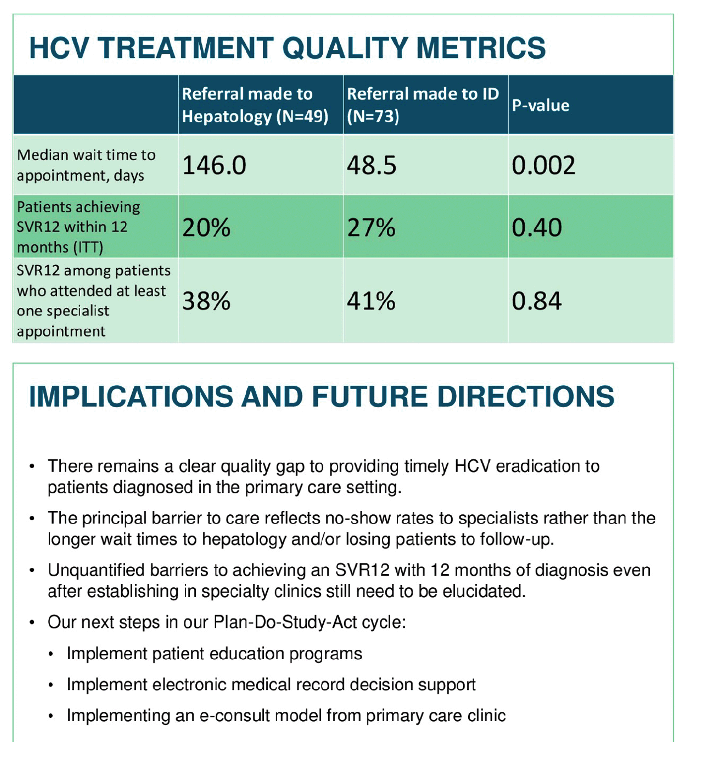
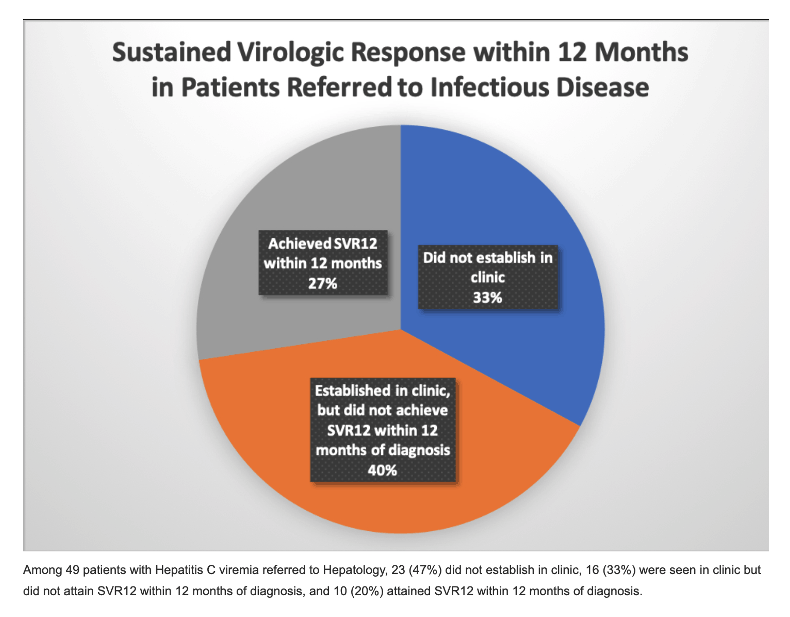
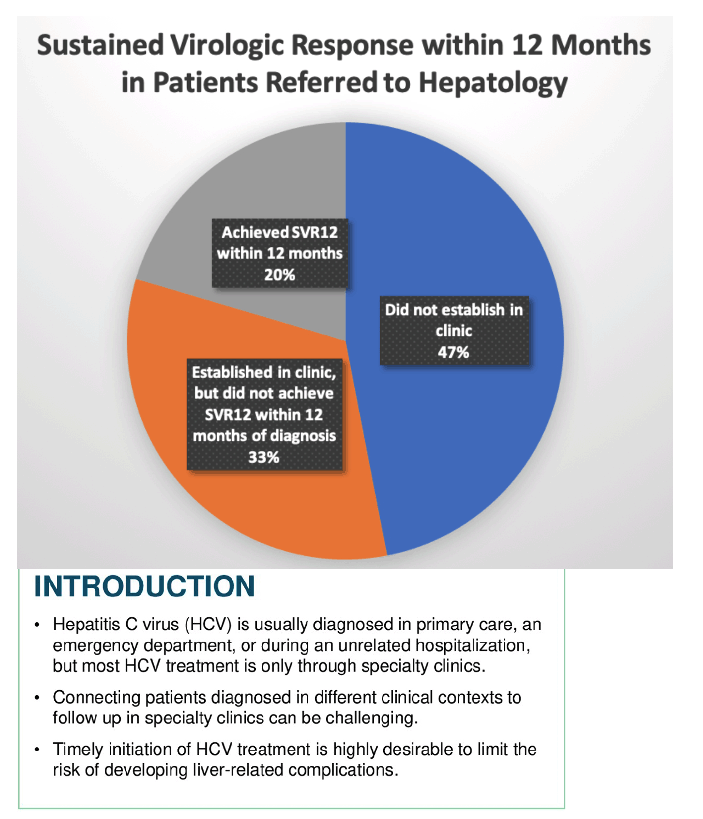
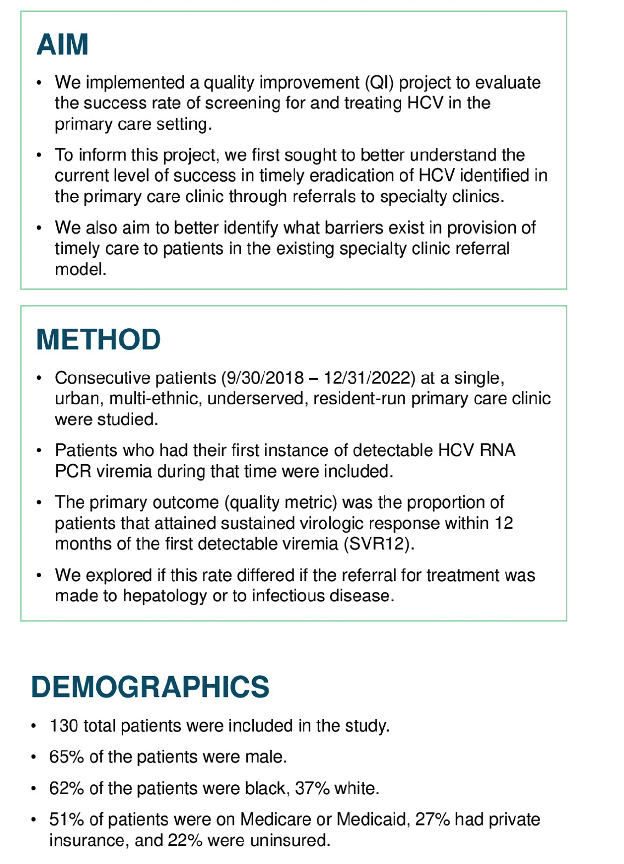
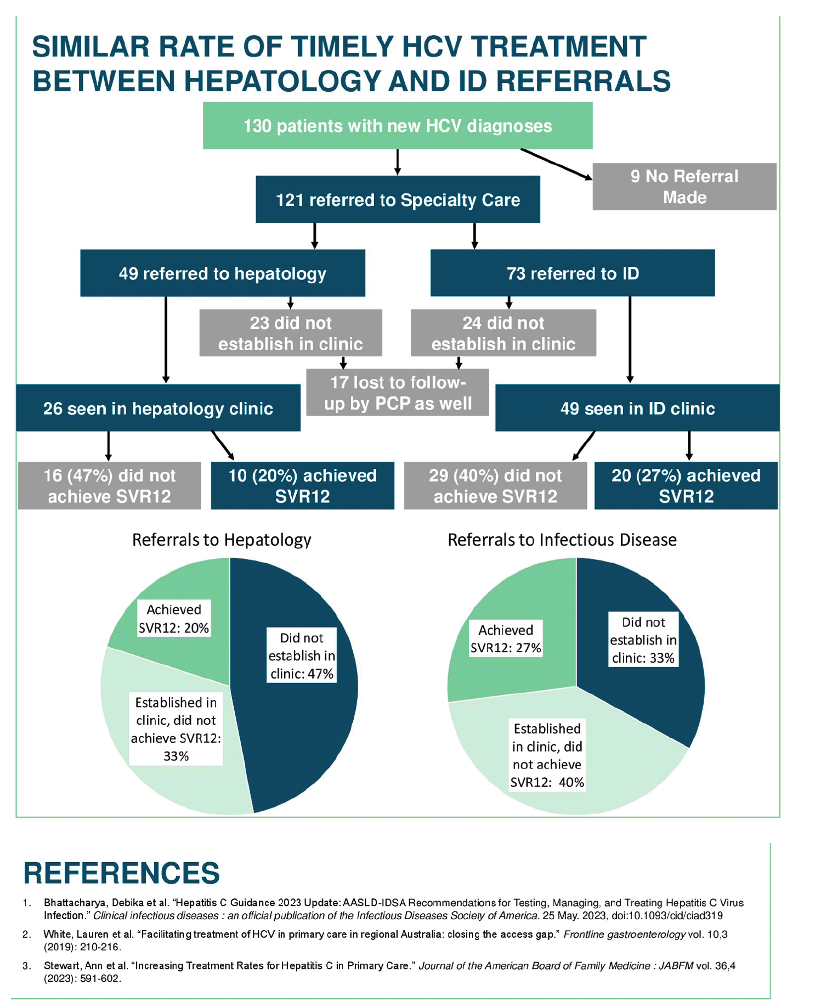

|
| |
|
 |
 |
|
|